*** DRAGON FRUIT ***
***** IN CALIFORNIA *****
***** AND ELSEWHERE. *****
____________________
CHAPTER 2 (pages 2 to 8)
Dragon Fruit in California.
The first Paul Thomson continuers.
_____________________________
Page 4 / 8 of the article.
________________________________
The cultivation and creation of hybrids has been pursued by CRFG and UCCE (University of California Cooperative Extension)
Some personalities stand out more particularly as Edgar Valdivia, "ambassador of Dragon fruit", Leo Manuel, administrator of Yahoo's "PitayaFruit" group, gathering researchers, growers and amateurs from all over the world interested in this fruit, Ramiro Lobo from UCCE, who gives conferences every year concerning Dragon fruit.
There are more than 70 species or hybrids available in California. The time between flowering and harvest of a fruit is about 35 to 45 days, except for H. megalanthus fruits where it is between 150 and 180 days.
The plants are often grown on wooden poles or wire meshes, the plants are left in their pots which are dug into the soil (bottom cut) which makes it possible to water and fertilize more efficiently and to fight against animals that destroy the roots (moles, rabbits, for example).
Watering is done by drip irrigation with the addition of fertilizer in the water.
Plantation is often protected by a net that prevents birds from entering and eating fruit before harvesting.
One or more hives can be installed close to the plantation and many bees cross-pollinate.
Here are some pictures taken at the University of California plantation during the 2015 Dragon Fruit Festival.
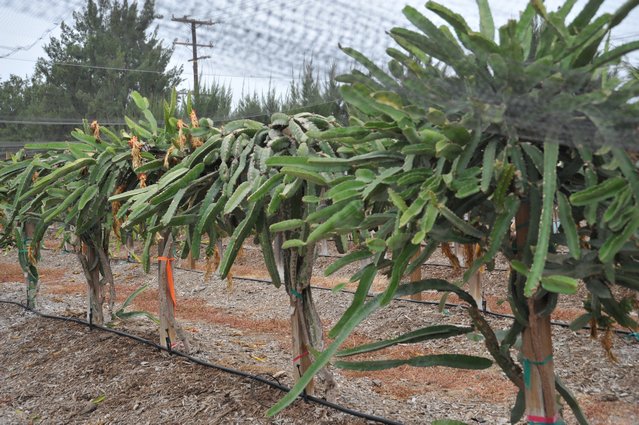
The cultivation is done here on wooden poles. We clear see the protective net and drip irrigation pipes.
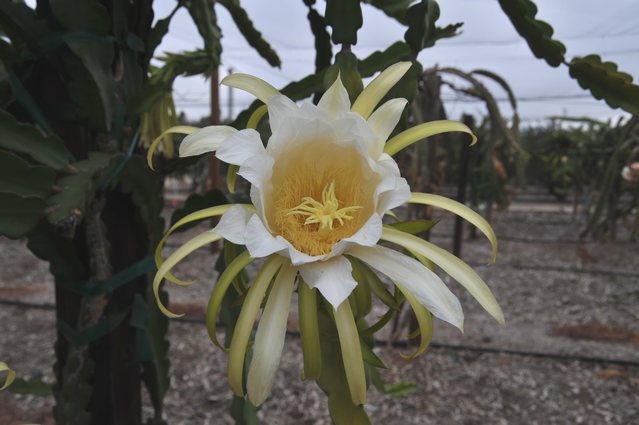
Here is a flower from the hybrid "American Beauty" taken in the early morning. The flowering of all Hylocereus is nocturnal. The flower hasn't closed yet.
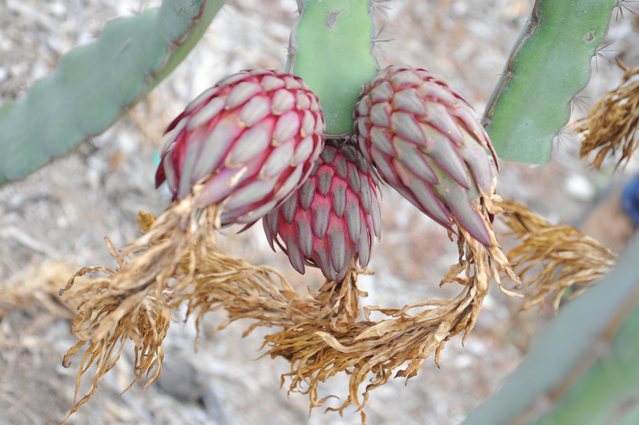
The photo shows unripe fruits from the red-pulped hybrid "El Grullo". The dried flowers are still attached to the fruit.
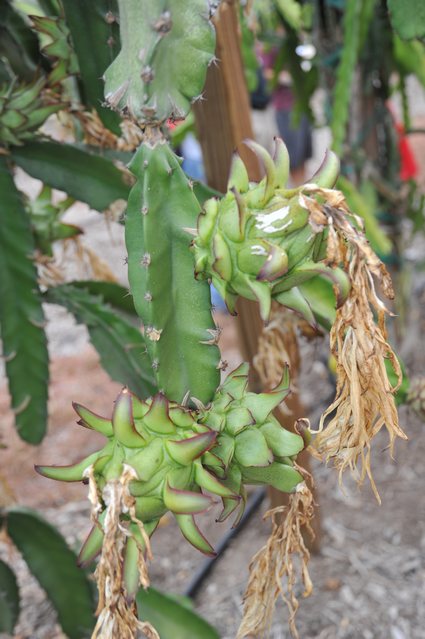
Here, unripe fruit from another hybrid.
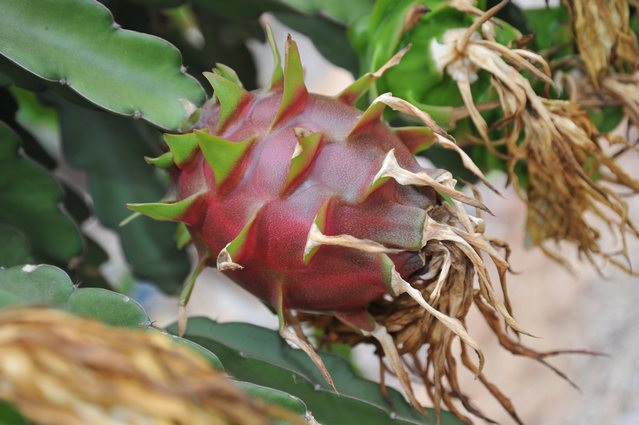
And finally an almost ripe fruit from a different hybrid.
And now, here are some pictures taken in the VP FARMS plantation with plants covered with flowers.......
___________________________________
BACK TO THE SUMMARY OF THE ARTICLE
_________________________________________